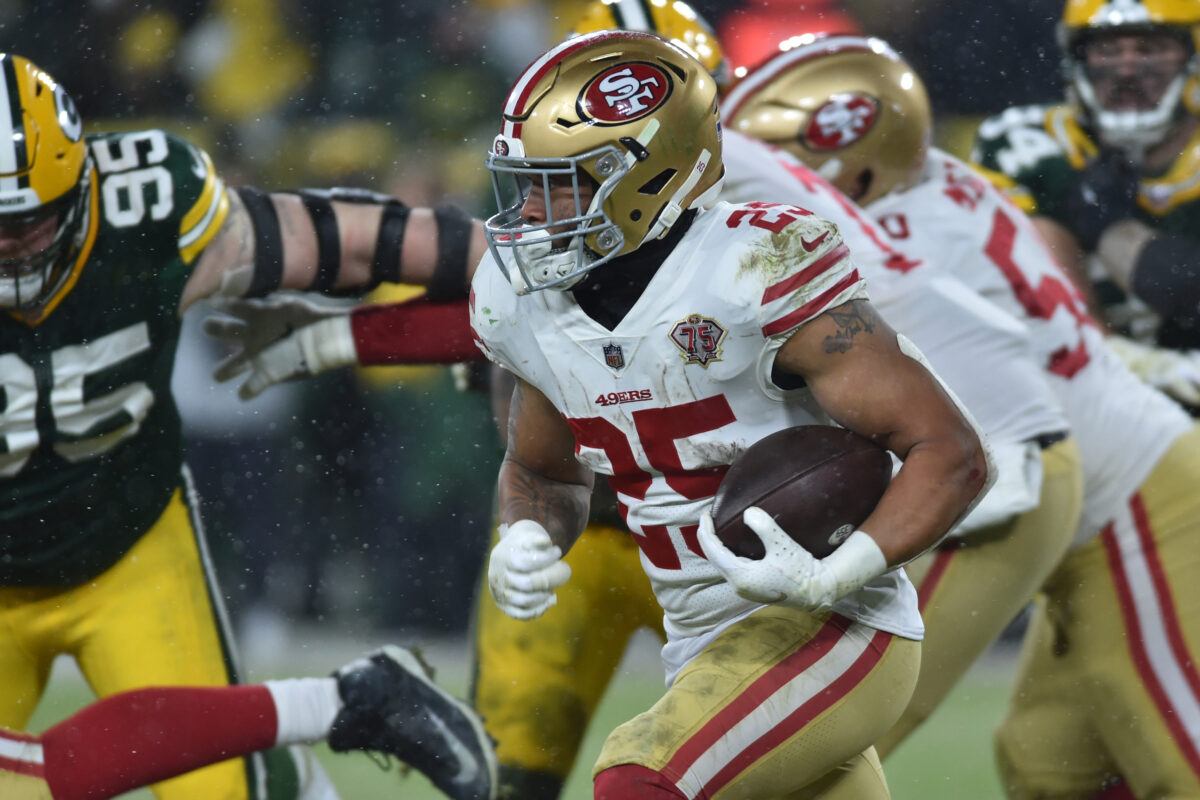How does Sermon translate to the NFL and fantasy football?
Trey Sermon latched onto the Oklahoma Sooners in 2017 and played in 13 games as a freshman, starting three. As a sophomore, he time-shared the backfield with Kennedy Brooks and ended with 1,128 total yards and 13 touchdowns. That big year was followed up with falling to No. 3 in the 2019 backfield behind Brooks and Rhamondre Stevenson. He was lost for the season with a knee injury after ten games.
Sermon transferred to Ohio State as a graduate student in 2020 with one remaining year of eligibility. He became their starter, leading the backfield with 116 rushes for 870 yards and four scores over the eight games they played in the COVID-19 shortened season.
In the Big Ten championship versus Northwestern, he set a school record with 331 rushing yards in a single game as the MVP. The Buckeyes advanced to the National Championship, but he suffered a shoulder injury on the first play.
Height: 6-1
Weight: 215 pounds
40 time: 4.57 seconds
Though he was a four-year player between the two schools, he never had a truly heavy load and still has plenty of tread left on the tires with never more than 164 carries in a season. Sermon’s best games were well-timed. He responded well when the Buckeyes turned to him as a workhorse in their biggest games of the year.
[lawrence-related id=458222]
After a college career of around a dozen touches per game, he followed his monster 29-carry effort over Northwestern with 31 runs for 193 yards in the playoff win over Clemson. That included four catches for 61 yards.
RB Trey Sermon, Oklahoma* and Ohio State stats
| Year |
Games |
Runs |
Yards |
Avg. |
TD |
Catch |
Yards |
TD |
Total Yards |
Total TDs |
| 2017* |
13 |
121 |
744 |
6.1 |
5 |
16 |
139 |
2 |
883 |
7 |
| 2018* |
14 |
164 |
947 |
5.8 |
13 |
12 |
181 |
0 |
1128 |
13 |
| 2019* |
10 |
54 |
385 |
7.1 |
4 |
8 |
71 |
1 |
456 |
5 |
| 2020 |
8 |
116 |
870 |
7.5 |
4 |
12 |
95 |
0 |
965 |
4 |
The positive coming into the NFL draft is that he’s relatively fresh out of college and has only started to explore what he can do as a heavy-use, primary back.
Pros
- Prototypical size
- Great burst with inside runs
- Quick cuts and agility keeps defense off-balance
- Vision improved throughout college
- Strong pass blocker
- Excellent ball security
- Powerful inside runner
- Good run after catch on limited receptions
- Played better when teams needed him most
- Good acceleration after cuts
Cons
- Top speed is only average at best
- Can catch, but marginal experience as a receiver
- Less versatility suggests committee role
- Not a breakaway player
- Runs upright
- Knee and shoulder injuries in college
Fantasy football outlook
Given the devaluation of the running back position for NFL teams, Sermon is likely a Day 3 selection and will head to a team looking for either another back to add to the rotation or just beefing up the depth chart. Since he’ll fall deeper into the draft, he’ll be available to all teams, and his value will rely strongly on where he lands.
His lack of top-end speed and minimal use as a workhorse in college points at just an average back in the NFL. He’ll likely need injuries to other players to shake up a depth chart and give him opportunity. Then again, Sermon played best in the biggest games and while he’s dinged for a lack of receiving experience, he’s done well when given a bigger role.
Unless he falls to a team with a shaky backfield that promises opportunity, his first year only calls for drafting later in a fantasy league as depth, hoping that the situation falls such that he gets a chance to shine. He’s one to track in the summer and could surprise.

